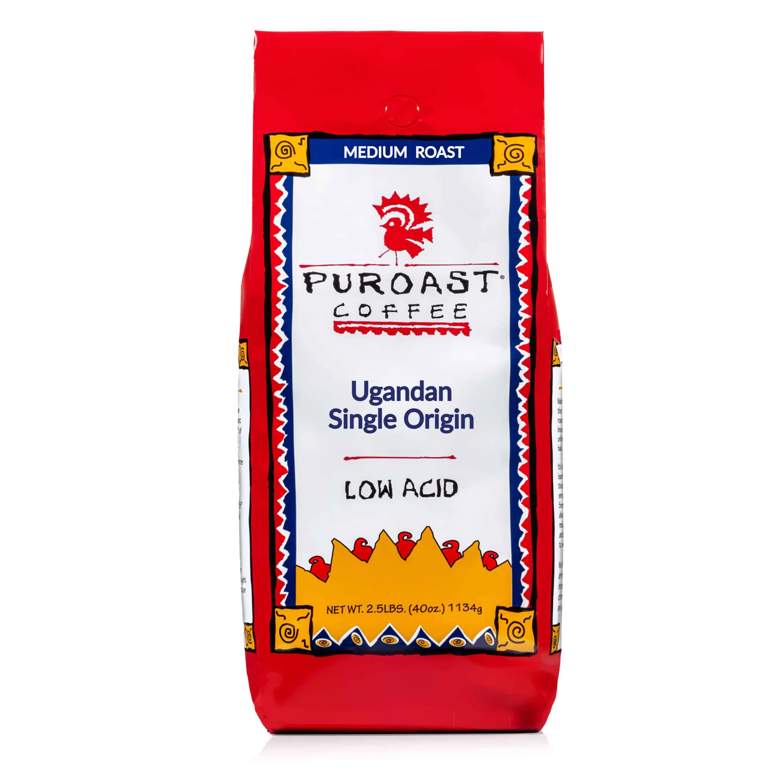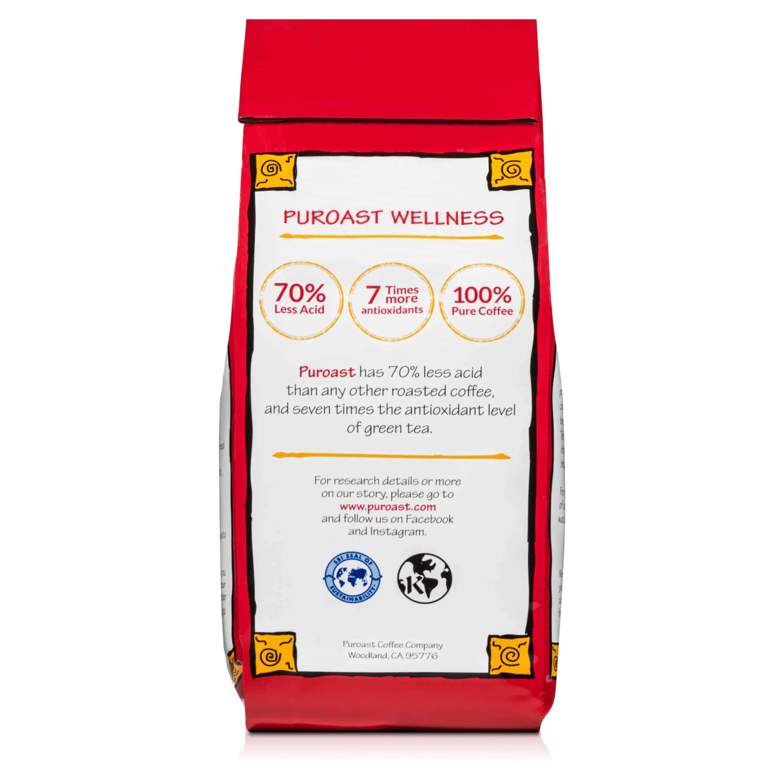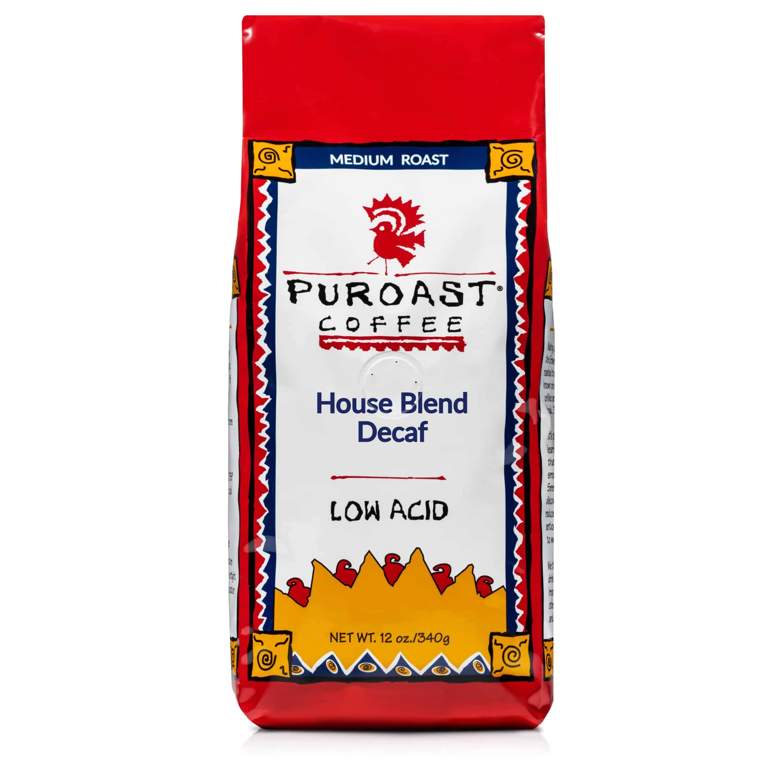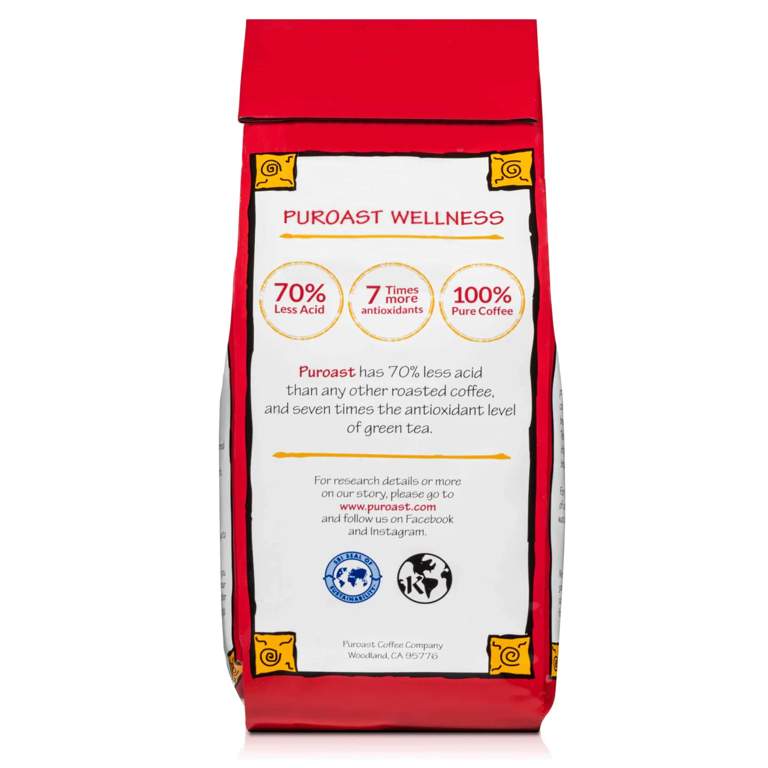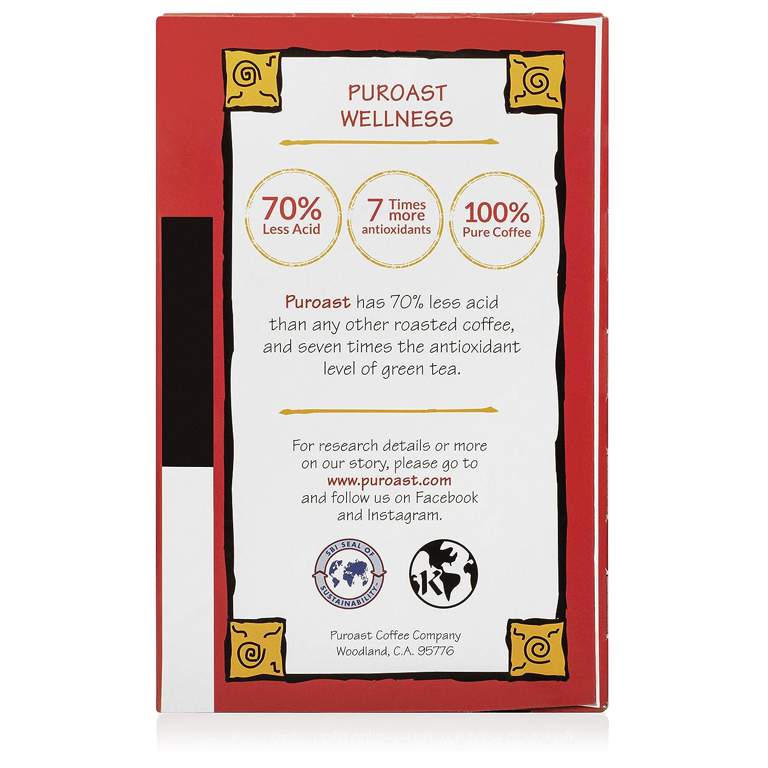Bestsellers for Low Acid Coffee
In the realm of nutrition and wellness, the conversation often turns to the impact of acidic foods on our health. Understanding acidity, measured by the pH scale, is crucial in discerning how different foods affect our body's balance—and overall health. Amidst this discussion lies a significant focus on low-acid alternatives that promise not only enhanced well-being without depriving you of enjoyment.

on Puroast.com
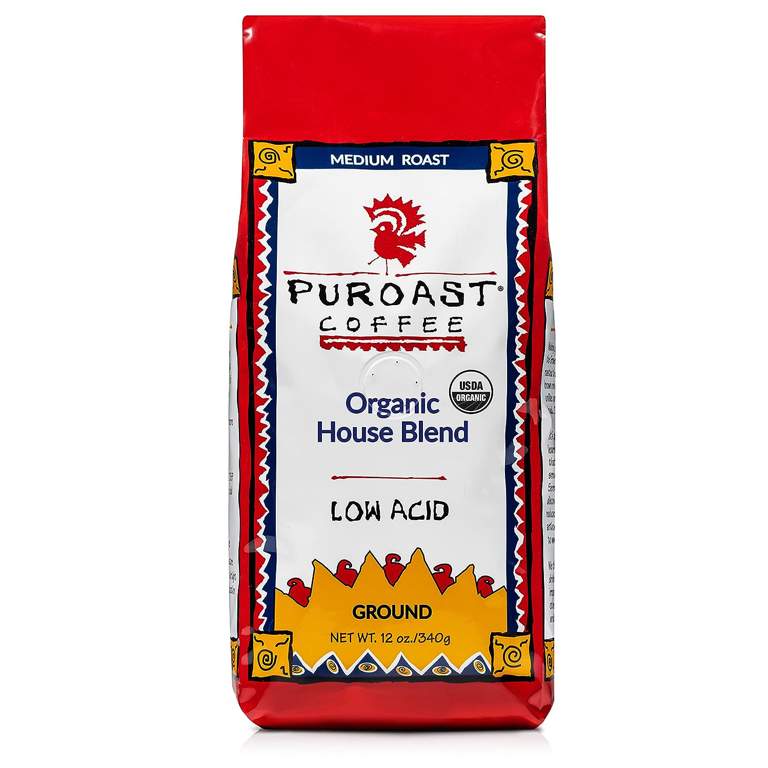
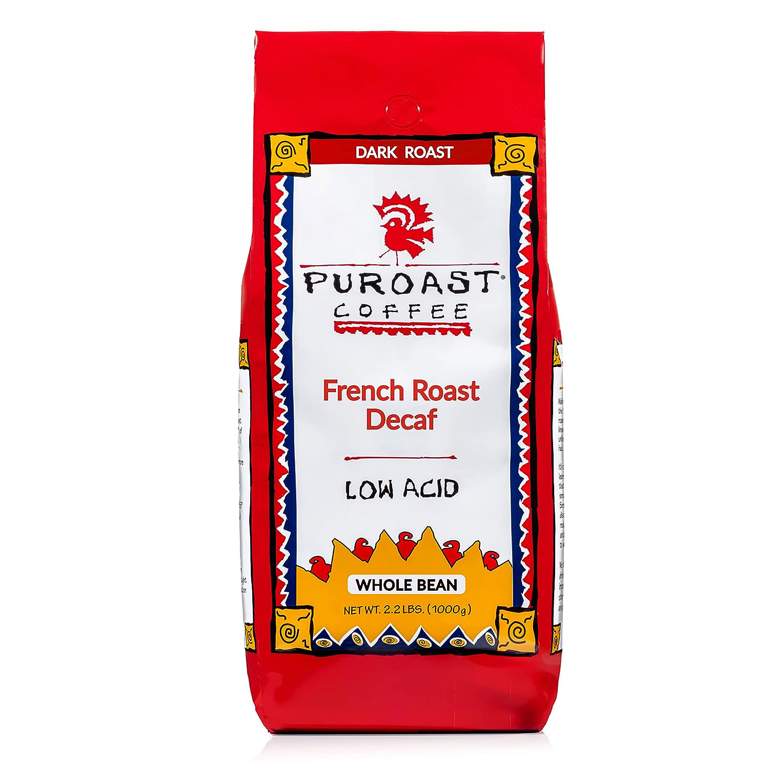
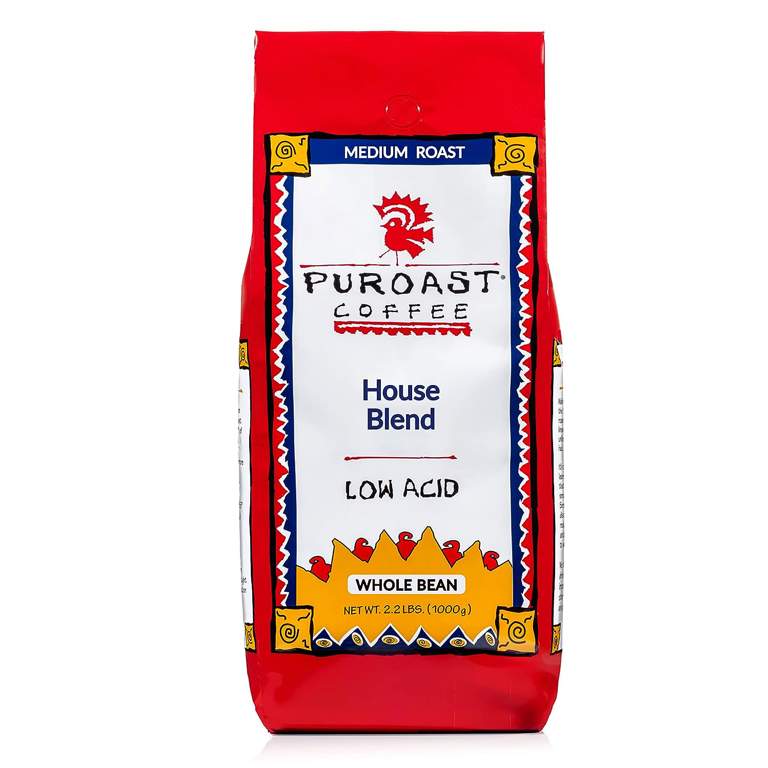
What Are Acidic Foods?

Acidic foods are those that have a pH level below 7, which means they are on the acidic side of the pH scale. The acidity of a food can affect our body in various ways, including how it is digested and its impact on our internal pH balance. Foods can be considered acidic based on two criteria: their inherent pH level and their potential to create an acidic environment in the body after consumption.
Foods with an inherent acidic pH include fruits like lemons and oranges, as well as tomatoes and vinegar. These foods are naturally acidic due to their chemical composition. Despite their acidity, some of these foods can actually have an alkalizing effect once metabolized by the body.
On the other hand, certain foods may not be acidic in themselves but tend to produce acid when digested. This category includes meat, poultry, fish, dairy products, eggs, and grains. When these foods are broken down by digestion, they release acids into the bloodstream, potentially affecting the body's acid-base balance.
High-acid forming foods are known to include processed meats, some types of fish such as salmon and tuna, and dairy products like milk and cheese. Grains also fall into this category due to their acid-producing nature upon digestion.
An alkaline diet focuses on minimizing intake of these high-acid forming foods while increasing consumption of alkaline-producing items such as fruits, vegetables, nuts, and legumes. This dietary approach aims to maintain a balanced internal pH level for optimal health.
For individuals with conditions like gastroesophageal reflux disease (GERD), consuming inherently acidic foods may trigger symptoms. Therefore, understanding which foods are acidic and how they affect your body is crucial for managing such conditions effectively.
Acidity and the pH Scale

The pH scale is a scientific tool used to measure how acidic or alkaline a substance is, ranging from 0 to 14. A pH of 7 is considered neutral, with values below 7 being acidic and those above 7 alkaline. The human body maintains a slightly alkaline serum pH level around 7.4, essential for sustaining life. This delicate balance underscores the importance of understanding the impact of dietary choices on our body's pH levels.
Foods and beverages can influence our internal pH balance in various ways. When ingested, some foods leave behind acid-forming compounds, while others contribute to a more alkaline environment. This distinction is crucial for individuals aiming to manage their dietary intake based on the potential acidity or alkalinity produced by their food choices.
For example, consuming high-acid forming foods like processed meats and certain dairy products may shift the body's natural pH balance towards acidity. Conversely, incorporating more fruits, vegetables, nuts, and legumes can promote an alkaline state that supports overall health.
One notable example of food affecting acidity levels is tomatoes. Despite being classified as acidic due to their citric acid content, tomatoes have an alkalizing effect once metabolized by the body. This paradox highlights the complexity of how different foods can influence our internal pH balance in unexpected ways.
The concept of an alkaline diet centers on this principle, advocating for a diet rich in foods that support the body's natural pH level. While most people can safely enjoy a variety of acidic foods as part of a balanced diet, those with specific health conditions may benefit from monitoring their intake of such items.
Acidity and Your Health
Acidic environments in the body have been a topic of discussion regarding their potential health impacts. Scientific evidence suggests that while acidic foods are part of a normal diet, their effects can vary based on individual health conditions and dietary balance. For instance, acidic foods might contribute to dental issues such as cavities or infections due to the erosion of tooth enamel. Limiting highly acidic foods could therefore be beneficial for dental health.
For people with kidney disease, reducing intake of acid-forming foods may offer benefits by lessening the burden on the kidneys. However, for the general population, consuming acidic foods has not been directly linked to an increased risk of fractures or bone mineral loss. Interestingly, urine pH levels have been associated with bone mineral density, indicating that dietary acidity might influence bone health indirectly.
It is worth noting that individuals with compromised kidney function could be more susceptible to bone deterioration if their diet is high in acid-forming foods. This highlights the importance of dietary awareness and moderation, especially for those with underlying health conditions.
In summary, while acidic foods are a natural part of diverse diets, their impact can vary among individuals. Choosing low-acid alternatives can aid in maintaining a balanced diet and supporting overall health, particularly for those with specific dietary concerns or preferences.
The Alkaline Diet

The alkaline diet emphasizes the consumption of foods that can help maintain the body's optimal pH balance. This diet is grounded in the idea that certain foods can influence the body's acid levels. Foods that are considered alkalizing, such as fruits and vegetables, are encouraged, while those that may contribute to acidity, like meat and processed foods, are limited. The goal is to support overall health by promoting a more alkaline environment within the body.
Eating more vegetables and fruits, along with drinking plenty of water, aligns with general health recommendations and can aid in weight loss. Additionally, reducing intake of sugar, alcohol, meat, and processed foods as part of an alkaline diet can lower cancer risk. These dietary adjustments are beneficial not because they change the body’s pH levels significantly but because they represent healthier eating habits.
The pH scale, which ranges from 0 to 14, measures how acidic or basic a substance is. Foods believed to be alkaline have a pH greater than 7 and are thought to help neutralize acid in the bloodstream. This concept forms the basis of the alkaline diet's approach to nutrition.
Research indicates that an alkaline diet might have positive effects on bone health by reducing muscle wasting. The diet could also potentially influence growth hormone levels and alleviate back pain. Furthermore, adequate vitamin D absorption and effectiveness of chemotherapy could be enhanced through an alkaline dietary approach.
It is important to note that while the body regulates its pH level tightly, dietary choices can impact the excretion of acids or bases through urine. However, this does not mean that consuming alkaline foods will drastically alter blood pH but rather supports the body's natural mechanisms for maintaining pH balance.
For coffee lovers looking to align with an alkaline diet without giving up their beloved beverage, Puroast Low Acid Coffee offers a solution. Our coffee has a higher pH level compared to average coffees on the market, making it a more suitable option for those seeking low-acid alternatives. By choosing Puroast Low Acid Coffee, consumers do not have to compromise on taste or quality while adhering to dietary preferences aimed at enhancing their health.
Low Acid Foods to Eat

Incorporating low acid foods into your diet can offer numerous health benefits, especially for those with sensitive digestive systems or conditions like GERD. Low acid foods tend to be gentler on the stomach, reducing the risk of discomfort and irritation. They can also contribute to a balanced internal pH level, supporting overall bodily functions and well-being.
Vegetables are a cornerstone of a low acid diet. Leafy greens such as spinach, kale, and swiss chard are not only low in acidity but also rich in essential nutrients and antioxidants. These vegetables support heart health and provide dietary fiber, which aids digestion.
Fruits, while often thought of as acidic due to citrus varieties, include low acid options like bananas, melons, and avocados. These fruits offer vitamins and minerals crucial for health maintenance without contributing significantly to acidity levels.
Whole grains like oatmeal, brown rice, and quinoa are excellent choices for those looking to reduce acidic intake. They provide sustained energy through complex carbohydrates and contain fibers that promote digestive health.
Legumes including beans, lentils, and chickpeas are alkaline-forming foods that can help balance the body’s pH levels. They are also a great source of protein for those following plant-based diets.
Nuts and seeds such as almonds, flaxseeds, and chia seeds have an alkalizing effect on the body. They are packed with healthy fats that support brain function and heart health.
For dairy alternatives, almond milk and coconut milk are less acidic than traditional cow’s milk and can be used in various recipes or enjoyed on their own.
Herbal teas are a comforting beverage option that can help maintain a low acid diet. Unlike traditional coffee which can be high in acidity, herbal teas offer a soothing alternative with varied health benefits depending on the herbs used.
For coffee lovers who do not want to give up their favorite morning ritual but are looking for a healthier option, Puroast Low Acid Coffee is an ideal choice. Our coffee provides all the rich flavor you love with significantly lower acidity levels than traditional coffees. This makes it easier on your stomach while still delivering the caffeine kick you desire.
Choosing these low acid foods not only supports digestive comfort but also contributes to a nutritious and balanced diet. By selecting options that align with both your health needs and taste preferences, you can enjoy a wide range of delicious meals without compromising on wellness.
FAQ

What is the difference between inherent acidity and dietary acidity?
Inherent acidity refers to the natural pH level of a food or beverage before consumption. Dietary acidity, conversely, relates to the effect a food or drink has on the body's internal acid-base balance after it has been metabolized.
How does the body maintain its pH balance?
The body regulates its internal pH through buffering systems involving the lungs and kidneys. These systems process and remove excess acid or base from the body to maintain the optimal pH level for cellular functions.
Can eating alkaline foods change my blood pH?
Eating alkaline foods does not significantly change blood pH levels due to the body's strict regulatory systems. However, it can influence the pH of urine and may support the body's natural mechanisms for maintaining pH balance.
Is it possible to consume too many alkaline foods?
Consuming a variety of foods, including those considered alkaline, is part of a balanced diet. Excessive consumption of any food group to the exclusion of others may lead to nutritional imbalances.
What are some signs of excessive acidity in the diet?
Symptoms of excessive dietary acidity can include indigestion, acid reflux, and discomfort after eating acidic foods. Long-term excessive acidity may contribute to the development of certain health conditions, although individual susceptibility varies.
How can I measure the pH of my food?
Measuring the pH of food requires specific tools like pH strips or a digital pH meter. These tools can determine the acidity or alkalinity of liquid foods and beverages but are not commonly used for solid foods in home settings.
Can low-acid foods benefit athletic performance?
Low-acid foods may indirectly benefit athletic performance by supporting overall health and reducing discomfort associated with acid reflux or indigestion, potentially improving recovery and nutrient absorption.
Are there any risks associated with a low-acid diet?
A well-balanced low-acid diet poses minimal risks for healthy individuals. It is critical, however, to ensure that dietary adjustments do not lead to deficiencies in essential nutrients.
How does water intake affect acidity?
Adequate water intake helps the kidneys flush out excess acid through urine, supporting the body's natural pH balance. Drinking sufficient water is a simple way to assist in maintaining optimal hydration and acid-base balance.
Can stress influence acidity levels in the body?
Stress can lead to the production of acid-forming hormones like cortisol, indirectly influencing the body's internal pH balance and possibly contributing to an acidic environment.
What role do probiotics play in acidity?
Probiotics support digestive health by promoting a balanced gut microbiome, which can enhance the digestion and absorption of nutrients, potentially reducing the production of excess acid in the body.
How does sleep affect acid-base balance?
Adequate sleep supports the body's regulatory mechanisms, including those responsible for maintaining acid-base balance. Disruptions in sleep patterns may impair these processes, influencing acidity levels.
Are there any environmental factors that can affect body acidity?
Environmental factors such as pollution and exposure to chemicals can introduce acid-forming toxins into the body, potentially impacting the internal acid-base balance and overall health.
How does aging affect the body's ability to maintain pH balance?
As the body ages, kidney function may decline, potentially affecting the organ's ability to excrete excess acids effectively. This emphasizes the importance of a balanced diet to support the body's buffering systems.
What is the role of exercise in managing dietary acidity?
Moderate exercise supports the body's metabolic processes and can improve the efficiency of the acid-excreting systems. However, intense exercise may temporarily increase acid production due to the production of lactic acid.
Puroast Buying Guide

Puroast Low Acid Ugandan Single Origin Coffee, Ground, 2.5LB
Puroast Low Acid Ugandan Single Origin Coffee offers symptom relief from heartburn and acid reflux, as well as superb flavor. It is also packed with antioxidants, making it a great choice for those seeking to improve their digestive health. Additionally, the roasting process gives a unique flavor that you won't find in any other coffee.
- Delicious taste: Many reviewers enjoy the taste of Puroast Low Acid Ugandan Single Origin Coffee, describing it as the best tasting coffee they have ever enjoyed.
- Low Acid: The coffee is low in acid, which makes it easier on the stomach and suitable for people with GI issues or other conditions that make them sensitive to acidic foods/drinks.
- Safe for sensitive bladders: Some reviewers mentioned that they suffer from interstitial cystitis, a condition that makes their bladder very sensitive to caffeine and acidic foods/drinks. They reported no pain after drinking this coffee.
- Provides necessary caffeine without pain: Despite its low acidity, this coffee still provides the necessary caffeine boost without causing discomfort or pain. This is especially beneficial for people who need caffeine to stay awake but have health conditions that make them sensitive to it.
- Direct purchase option: Reviewers appreciate the ability to buy directly from Puroast, ensuring they always have a supply of their favorite coffee.
- Promotes word-of-mouth marketing: The taste and benefits of this coffee are so good that many customers recommend it to others.
- Tolerable aftertaste: While some reviewers noted a slight aftertaste, they found it tolerable given the benefits of drinking this low acid coffee.
Puroast Low Acid House Blend Decaf Coffee, Whole Bean, 2.5LB
This Puroast Low Acid House Blend Decaf Coffee, Whole Bean, 2.5LB is a great choice for those looking for an excellent tasting coffee. It has a low acidity which makes it easier on the stomach, and the whole bean provides maximum flavor and aroma. Plus, with 2.5LBs you'll have plenty to enjoy!
- Low Acidity: Customers appreciate the low acid content of Puroast coffee, making it an ideal choice for those with gastrointestinal problems.
- Great Taste: Many users have praised the taste of this house blend, highlighting that it's one of the best-tasting decaf coffees they've tried.
- Decaf Option: The availability of a decaf version is a big plus for those who prefer or need to avoid caffeine.
- Ideal for Sensitive Stomachs: Its low acidity makes it a comfortable choice for people with sensitive stomachs or those who experience discomfort when drinking regular coffee.
- Superior to Other Low Acid Coffees: Some customers believe that Puroast is superior to other low acid coffees they have tried in the past.
- Versatility: One user expressed interest in trying it as an espresso, suggesting its potential versatility in different brewing methods.
- Wish for Wider Availability: While not a direct product feature, one user's wish for this product to be available in grocery stores underscores its popularity and demand.
Puroast Low Acid Coffee Single-Serve Pods, French Roast, Certified Low Acid Coffee - pH above 5.5, Dark Roast, Original, (24 Count)- Gut Health, Higher Antioxidant, Roasted with Clean Energy - Compatible with Keurig 2.0 Coffee Makers
Puroast Low Acid Coffee Single-Serve Pods are perfect for coffee lovers with heartburn, acid reflux and other gastrointestinal issues. It contains 7X higher antioxidants than green tea and 5X higher antioxidants than leading coffee brands. Additionally, the coffee is sustainably sourced, chemical & pesticide free and roasted with clean energy. Its unique roasting method creates a smooth, rich cup of coffee with no bitter aftertaste.
- Low Acid Content: Puroast Coffee's low acid content, with a pH above 5.5, is highly appreciated by consumers, making it a great choice for individuals with sensitive stomachs or those who just want to enjoy their coffee without the risk of acid reflux.
- Single-Serve Pods: The convenience of single-serve pods is a big plus. They are compatible with Keurig 2.0 coffee makers, ensuring a quick and easy brewing process.
- French Roast Flavor: Many reviewers love the rich, bold French Roast flavor of this coffee, making it a delightful start to their day.
- Gut Health-Friendly: This coffee is not just tasty but also beneficial for gut health. Consumers appreciate the fact that they can enjoy their daily cup without worrying about gut issues.
- Higher Antioxidant Levels: Puroast Coffee contains higher antioxidant levels compared to many other brands in the market, which is a major draw for health-conscious consumers.
- Roasted with Clean Energy: The environmentally-friendly approach of roasting the coffee with clean energy has been positively received by consumers who value sustainability in their products.
- Certified Low Acid Coffee: The certification as a low acid coffee offers assurance and credibility to consumers, reinforcing the product’s claim and increasing consumer trust.




